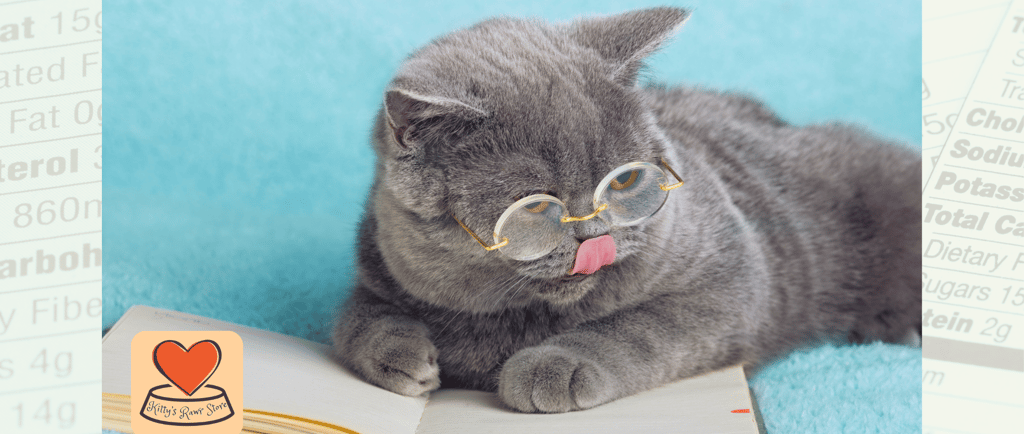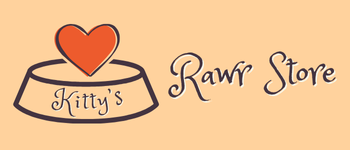What ingredient is that?
We have a look into pet food labelling and help you to decipher ingredients labels.


Have you ever really looked at the back of cat food packaging? Are there ingredients that leave you asking more questions? UK Pet Food (previously Pet Food Manufacturers Association) has discovered that 70% of pet owners don't know what 'by-products' are and 22% find the term off putting.
I am here to shed some light on what pet food labelling is actually telling you.....and what it's not.
Pet food labelling falls under EU legislation for animal feed and doesn't fall under the same rules as human food so it can seem a bit vague and confusing in places. As 'animal feed' covers everything from Bovine to Birman, Sheep to Siamese, Pig to Persian and more, pet food labelling terms can sometimes be aimed more towards farmers than the common cat keeper.
Currently, the law only requires labels to contain certain key pieces of information including;
List of ingredients (sometimes referred to as ‘Composition’)
Additives and a nutrition analysis (sometimes referred to as ‘Analytical Constituents’)
Feeding guidelines
Composition
The list of ingredients will be listed here in descending order of weight/amount, starting with the highest. This is where the biggest and perhaps the most important difference between human and animal food labelling is.
Pet food ingredients are listed but the amounts found in the product may not actually be defined. If you don't see a percentage amount next to an ingredient, this means the recipe for that particular food is not a fixed formula. This essentially allows the manufacturer to change the recipe at will without informing the end user. For example, the below is taken from a well known brand of dry adult cat food. This is how it is written on the packaging;
Dehydrated poultry proteins, rice, dehydrated pork proteins, wheat, maize, animal fats, hydrolysed animal proteins, vegetable fibres, wheat flour, maize gluten, yeasts products, beet pulp, minerals, soya oil, fish oil, psyllium husks and seeds (0.5%), yeasts (source of manno-oligosaccharides), marigold meal.
Hopefully you will notice that firstly, some of these ingredients are NOT biologically appropriate for cats, secondly, you will notice that only one percentage amount is listed. This means that whilst the ingredients are listed in descending order, the amount of each individual ingredient found in the food could change from batch to batch right under your whiskers. One batch may have 10% rice, whilst the next could have 80% - it's really anyone guess at this point.
The fact that certain pet food companies have the choice to list ingredient amounts and yet still choose not to do so doesn't show any kind of brand transparency, or any concern for the wellbeing of the animal, so you should ask yourself, why are they hiding?
The next concerning point to note is the name of the listed ingredients. When looking at the ingredients of most common household brands, the first one you will probably find is 'Meat and animal derivatives' or 'Meat and animal by-products.' But what the heck is this?
I'll be honest with you here, I don't know, and it seems that the people who produce the food don't even know. Here is another example taken from a well known brand of wet adult cat food. This is how it is written on the packaging;
With Poultry: Meat and Animal Derivatives (35%, including 4% Poultry in the Chunk*), Cereals, Minerals, Derivatives of Vegetable Origin, Various Sugars *Chunk Typically 40% of Product.
As expected, the first ingredient is this mystical Meat and Animal Derivatives ingredient. The * denotes that this product is typically made up of a minimum of 40% meat and animal chunk, and out of this 40%, a minimum of 4% of this is poultry. The 4% declaration is a legal labelling requirement which represents the minimum percentage content of the named ingredient, in this case poultry, and that is guaranteed to be present by the manufacturer. This in itself is unhelpful and means that the 4% could be chicken or turkey or both, again, who knows? But then what animal is the remaining 35% made from? And what part of said animal is it from?
Meat and Animal derivatives are by-products of the human food industry, so it could be anything from chicken heads to pig tails, your guess is as good as mine!
But the point again here is why can't they tell us what is in the food they are producing for our beloved pets, what are they hiding?
This example is also following suit of the previous example with regards to recipe and ingredient amounts. The ingredient 'Various sugars,' (which is actually a category description of a product containing sucrose, not a specified ingredient) is coming last but could still make up 15% of this food, but next week it could be 1%. Any sugar is not biologically appropriate to cats and should be avoided at all costs! Pet food manufacturers use sugars as a preservative and to attract your cat to the low quality food as they can smell sugars and fats, but don't actually have the receptors necessary to be able taste sweet things.
When you compare the ingredient listing of the above examples, taken from common household brands, to a high quality, species appropriate raw food from a company such as Purrform, you can see the difference in labelling for yourself. This is how the ingredients are listed on Purrforms Adult Complete Chicken 450g;
Composition: 80% Minced Chicken with Ground Bone, Chicken Liver 10%, Chicken Heart 5%, Chicken Gizzard 5%.
You know exactly what your cat is eating every time you serve this. There is no deception and nothing to hide, just simple, natural, nutritious food for your feline, as it should be.
Additives
Additives may include vitamins, flavours, preservatives, antioxidants and colours. You will want to have a close look at these, as artificial additives aren't great for your pets. A good quality food shouldn't need flavour additives as the food will already be full of natural flavour.
If companies are adding colours or artificial flavours, they are announcing that their food just isn't appealing to your pets without unnatural enhancements.
Added colours are purely for the benefit of humans and serve no nutritional purpose to animals. All additives must go through rigorous safety and efficacy tests before they can be used in pet food and this is strictly governed by EU legislation, but make sure to check for unnecessary nasties in this section on the labelling. When looking at raw cat food, this is where you may find the essential amino acid Taurine additive and other natural health boosting ingredients such as vitamin E, green lipped mussel and natural joint care additives.
Analytical Constituents
This is where some people get a little more confused. Here is where you will find the percentage amounts of certain food groups such as crude proteins, fats and fibres, which are all self explanatory, but what you may also see is a curious listing of 'Ash.' Now this is not what you think it is. Ash, or sometimes referred to as Inorganic Matter or Incinerated Residue, is simply the legal definition of the mineral content found in the food. This is not an additive or even something that is found in the food, it is called Ash because if you were to incinerate the food in question, proteins, fats and carbohydrates would burn away, and minerals such as calcium, phosphorous, iron would remain, so it's just a term used to measure the inorganic matter in foods. For example, any foods that contain bone, will have an ash percentage, as calcium and phosphorus wouldn't burn away, so you will always see it listed on complete raw pet food labelling.
Feeding Guidelines
This section on food labelling is probably the easiest to understand. It's just worth reminding you to check if the recommended amount for your pet is measured by meal OR day. If your pets food is legally defined as a 'complete' formula it will not need any more food added to it, but if it is defined as 'complementary,' you will need to follow the guidelines to find out what needs adding to make it a complete diet and in what amount. Feeding guidelines are usually based on an average sized pet (with breed taken into consideration) and in tip-top health. You may also see guidelines for pregnant animals and kittens here, so it's worth just having a double check during the next mealtime to make sure your cat is getting the correct amount of food to meet its nutritional needs.
In conclusion, pet food labelling can be very deceptive, so it's really important to have a read for yourself, don't just trust in a brand blindly. Hopefully you will be able to take something away from this article and next time you reach for your regular brand of cat food, take a moment to read the back and come to your own conclusions.
Need further advice?
Try our Advice Page for quick hints to help your furry feline. Or drop us a question via our contact form on the 'Contact Us' page and we will try our best to get you answers.


